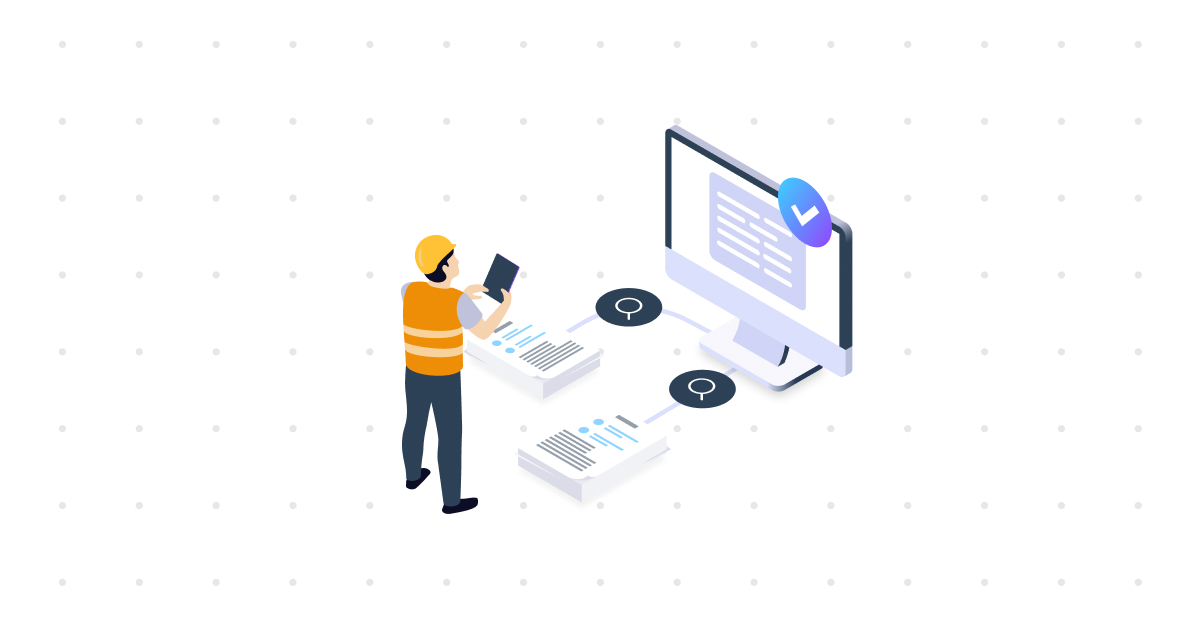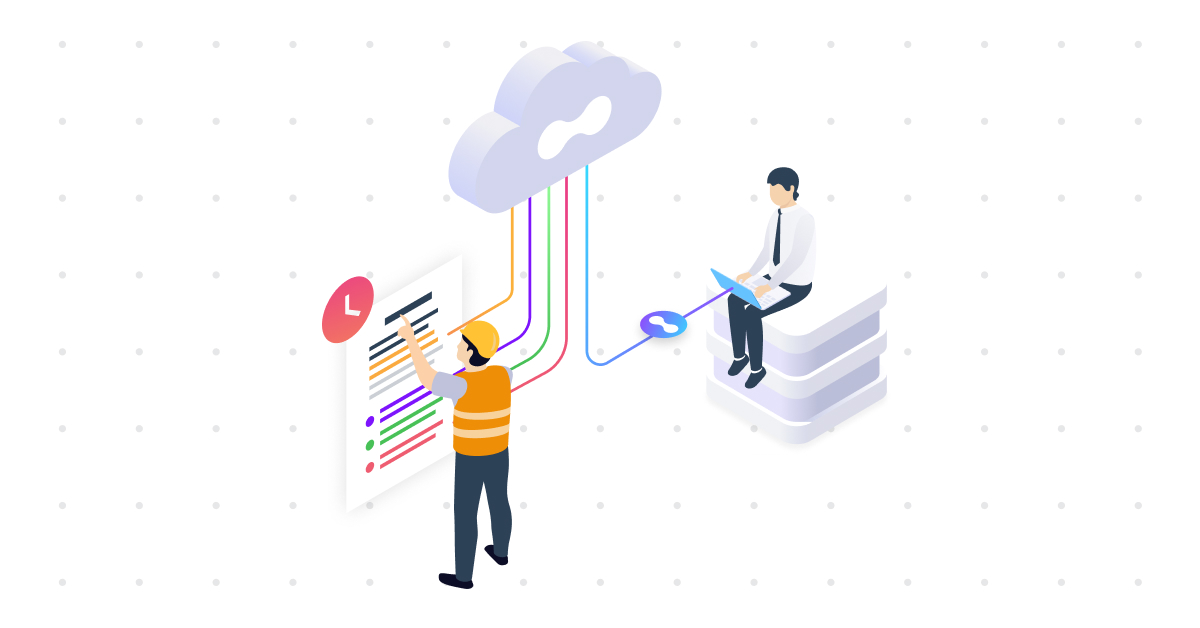Linked Data explained in 5 key topics
- Insight
You’ve probably heard Linked Data passing by as one of the core pillars of the Semantic Web. It aims to link data from different sources and exchange information in a machine-readable format. However, if you want to learn more about this topic, you will quickly end up on Wikipedia. Don’t get us wrong, we all love Wikipedia, but its definition of Linked Data might leave you with lingering questions: ”In computing, Linked Data is structured data that is interlinked with other data, so it becomes more useful through semantic queries.” In this blog, we’ll explain what it is and what they mean by ‘structured,’ how data can be ‘interlinked,’ and what the deal is with ‘semantics.’ Let’s dive into these questions through these five crucial topics:
1. What is ‘Structured Data’?
Let’s begin by breaking down the concept of “structured Data” in the context of Linked Data. Structured data means organizing information in a specific format that software can easily understand and interpret. It could reside in a table-based database (SQL) or one-dimensional files that organize data in a hierarchical structure (XML).
In short, we believe you structure data when one or more pieces of software can effortlessly ‘understand’ its contents. For example, if we group all the ‘user names’ together under a category called ‘Users,’ the software comprehends that it should interpret every single name underneath as a user.
2. Relational Data
When organizing and designing the data structure, we often separate entities from their relationships with other entities. For instance, a ‘user’ may relate to another entity ‘password,’ and in a database, the ‘user’ may relate to ‘company’.
This design helps any software application recognize and understand that every user relates to a company. However, there’s a problem with relational data. Different software suppliers and database architects create their unique structures. This leads to the need for explanations or agreements on common structures for exchanging data. Why isn’t there a universal structure for relational data?
Now, is this the same as Linked Data? No, it is not. It’s interrelated data, often stored in relational databases like MS SQL, where relationships are an instrument in structuring data. However, it’s not ‘Linked’ because it’s missing one essential ingredient—links.
3. Semantic Graph Data
Surprisingly, we already imply the most basic structure when working with entities and relations. We know this as a ‘triple,’ a structure that always comes in sets of three: one entity linked to another entity. This structure, the building block for understanding Linked Data, can extend infinitely and is subject to mathematical reasoning, earning the name ‘Graph.’
Now, here’s where it gets interesting. Instead of relating two entities together in a way that only the database knows, we make this relation explicit. This means that a computer can derive the meaning of all interrelated entities from their context: all relationships defining an item. Using Semantic Graphs, sometimes called ‘knowledge graphs,’ any software application that needs to interpret the data can do so if it understands the graph’s structure and how to query it.
4. Linked Data
We know links as hyperlinks, items that point to another location on the Internet. Hyperlinks are the backbone of the Internet as a global database; everyone encounters them daily while browsing the Internet. But mostly from clicking a word or button on a webpage to navigate to a different item on the same page or to go to another website.
Tim Berners-Lee, the Internet’s creator and director of the World Wide Web Consortium (W3C), envisions a more significant role for Linked Data: making Internet data machine-readable. Linked data is data stored in databases or files, where every entity and relation is assigned a Link—a web address where software can locate the item. These addresses adhere to web protocols (HTTP, RDF, and URIs), making the information accessible to any software developer granted access to Linked Data.
In the past, it took a lot of work to exchange data from one application to another, let alone share information across different companies, using various software vendors, or crossing national and industry barriers. By using Linked Data, we can share information much more efficiently, whether stored in our databases or servers, and have others access our information and Link to it if they like.
5. Linked Open Data
Using Linked Data technology to share data in a distributed manner opens up a wide array of new possibilities. Authors can reference their datasets to other datasets from various sources. Instead of relying on isolated and monolithic databases within their organizations, they can now create a cohesive web of interconnected data.
However, to truly transition from siloed databases to a cohesive global database, known as the Semantic Web or Web 3.0, we must minimize barriers to working with Linked Data.
Essentially, while Linked Data may sometimes require authorizations for data that is public and authors have a reason to distribute as widely as possible (like their product catalogs), the access to it should be accessible to anyone anywhere.
We know this concept as Linked Open Data, emphasizing the importance of making Linked Data universally accessible and usable.
What are the Benefits for You?
Linked data offers numerous benefits and plays a crucial role in breaking through data silos. These are isolated islands of data that make sharing and connecting different sources costly and complex.
It improves interoperability, allowing you to share and reuse data across multiple applications, platforms, and organizations. It also helps to connect a web of data and ensure that humans and machines can navigate and explore it.
Want to learn more about how you can use Linked Data in practice and store and manage it? Download ‘’Why sharing master data through Linked Data is the future’’ or meet with one of our experts.
Structure, Link, and Reclaim Control Over Requirements
In today’s complex engineering landscape, clarity is non-negotiable whether you’re working on a new satellite platform, an electric vehicle, or a regional water system. The systems we build are more complex, integrated, and dependent on data than ever before. And yet, one of the most critical ingredients for success, the specification, is still too often […]
ReadWhy You Should Use Laces to Simplify Verification and Compliance
Verification plays a critical role in industries where precision, safety, and accountability are non-negotiable, whether you’re designing infrastructure, building vehicles, or manufacturing medical devices. Yet, for many teams, managing the verification process is still a complex, manual, and error-prone task. This is where the Laces Requirements Manager comes in. It simplifies the planning and execution […]
ReadExtracting Specifications from Documents: Manual vs. NLP-Based Extraction
Extracting, interpreting, and applying specifications from technical documents, like standards, contracts, or regulations, is often a necessary but painstaking part of project or product management. Traditionally, this has been done manually, but recent advances in Natural Language Processing (NLP) have opened up new, intelligent alternatives. In this blog, we’ll explore the differences between manual and […]
Read


